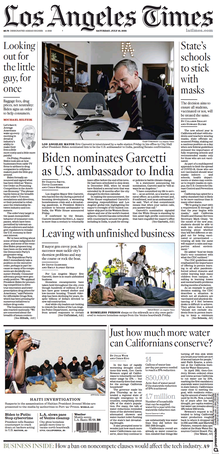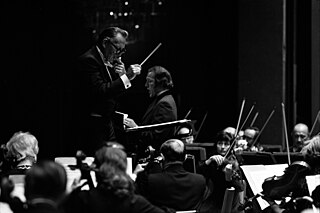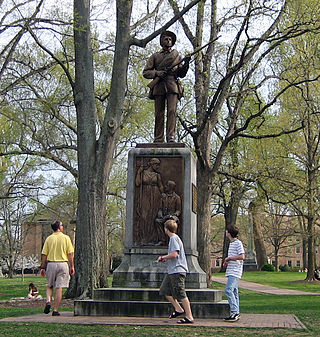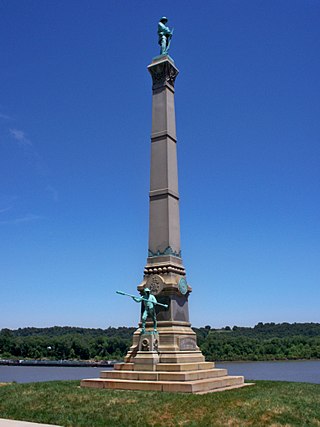Related Research Articles

The United Daughters of the Confederacy (UDC) is an American neo-Confederate hereditary association for female descendants of Confederate Civil War soldiers engaging in the commemoration of these ancestors, the funding of monuments to them, and the promotion of the pseudohistorical Lost Cause ideology and corresponding white supremacy.

The Los Angeles Times is an American daily newspaper that started publishing in Los Angeles in 1881. Based in the Greater Los Angeles area city of El Segundo since 2018, it is the sixth-largest newspaper by circulation in the United States, as well as the largest newspaper in the western United States. Owned by Patrick Soon-Shiong and published by California Times, the paper has won more than 40 Pulitzer Prizes.

Essie Mae Williams was an American teacher and author. She is best known as the eldest child of Strom Thurmond, Governor of South Carolina (1947–1951) and longtime United States senator, known for his pro-segregation politics. Of mixed race, she was born to Carrie Butler, a 16-year-old African-American girl who worked as a domestic servant for Thurmond's parents, and Thurmond, then 22 and unmarried. Williams grew up in the family of one of her mother's sisters, not learning of her biological parents until 1938 when her mother came for a visit and informed Essie Mae she was her mother. She graduated from college, earned a master's degree, married, raised a family, and had a 30-year professional career in education.

The Los Angeles Master Chorale is a professional chorus in Los Angeles, California, and one of the resident companies of both The Music Center and Walt Disney Concert Hall in Los Angeles. It was founded in 1964 by Roger Wagner to be one of the three original resident companies of the Music Center of Los Angeles County. Grant Gershon has been its music director since 2001, replacing Paul Salamunovich.

Moses Jacob Ezekiel, also known as Moses "Ritter von" Ezekiel, was an American sculptor who lived and worked in Rome for the majority of his career. Ezekiel was "the first American-born Jewish artist to receive international acclaim".

The Los Angeles Herald Examiner was a major Los Angeles daily newspaper, published in the afternoon from Monday to Friday and in the morning on Saturdays and Sundays. It was part of the Hearst syndicate. It was formed when the afternoon Herald-Express and the morning Los Angeles Examiner, both of which were published there since the turn of the 20th century, merged in 1962.

The Sons of Confederate Veterans (SCV) is an American neo-Confederate nonprofit organization of male descendants of Confederate soldiers that commemorates these ancestors, funds and dedicates monuments to them, and promotes the pseudohistorical Lost Cause ideology and corresponding white supremacy.

The Confederate Monument, University of North Carolina, commonly known as Silent Sam, is a bronze statue of a Confederate soldier by Canadian sculptor John A. Wilson, which once stood on McCorkle Place of the University of North Carolina at Chapel Hill (UNC) from 1913 until it was pulled down by protestors on August 20, 2018. Its former location has been described as "the front door" of the university and "a position of honor".

The Confederate Monument in Louisville is a 70-foot-tall monument formerly adjacent to and surrounded by the University of Louisville Belknap Campus in Louisville, Kentucky, United States. Relocation of the monument to Brandenburg, Kentucky, along the town's riverfront began November 2016, and was completed in mid-December. The granite and bronze structure was erected in 1895 by the Muldoon Monument Company with funds raised by the Kentucky Woman's Confederate Monument Association. The monument commemorates the sacrifice of Confederate veterans who died in the American Civil War.

The Confederate Monument in Owensboro, Ky., was a 16-foot-tall, two-part object — a 7-foot-tall bronze sculpture atop a 9-foot-tall granite pedestal — located at the southwest corner of the Daviess County Courthouse lawn, at the intersection of Third and Frederica Streets, in Owensboro, Kentucky. Nearly 122 years after the monument was dedicated in September 1900, the monument was dismantled in 2022, beginning with the removal of the sculpture in May 2022; the sculpture was placed in storage, pending a decision on what to do with it.
Confederate monuments and memorials in the United States include public displays and symbols of the Confederate States of America (CSA), Confederate leaders, or Confederate soldiers of the American Civil War. Many monuments and memorials have been or will be removed under great controversy. Part of the commemoration of the American Civil War, these symbols include monuments and statues, flags, holidays and other observances, and the names of schools, roads, parks, bridges, buildings, counties, cities, lakes, dams, military bases, and other public structures. In a December 2018 special report, Smithsonian Magazine stated, "over the past ten years, taxpayers have directed at least $40 million to Confederate monuments—statues, homes, parks, museums, libraries, and cemeteries—and to Confederate heritage organizations."

The Confederate Memorial was a memorial in Arlington National Cemetery in Arlington County, Virginia, in the United States, that commemorated members of the armed forces of the Confederate States of America who died during the American Civil War. Authorized in March 1906, former Confederate soldier and sculptor Moses Jacob Ezekiel was commissioned by the United Daughters of the Confederacy in November 1910 to design the memorial. It was unveiled by President Woodrow Wilson on June 4, 1914, the 106th anniversary of the birth of Jefferson Davis, the President of the Confederate States of America.

Memorial Hall is a historic building on the Peabody College campus of Vanderbilt University in Nashville, Tennessee. It was built in 1935 as a dormitory hall for female descendants of Confederate States Army veterans. Its former name resulted in multiple lawsuits and student unrest. In August 2016, Vanderbilt announced it would reimburse the United Daughters of the Confederacy for their financial contribution and remove the word Confederate from the building.

Florida's Tribute to the Women of the Confederacy, also known as A Tribute to the Women of the Southern Confederacy and the Monument to the Women of the Confederacy, is an outdoor Confederate memorial installed in Jacksonville, Florida's Springfield Park.

More than 160 monuments and memorials to the Confederate States of America and associated figures have been removed from public spaces in the United States, all but five since 2015. Some have been removed by state and local governments; others have been torn down by protestors.

Jefferson Davis, created by Henry Augustus Lukeman, is a bronze sculpture of Jefferson Davis – a U.S. Senator, U.S. Secretary of War, plantation owner and the only President of the Confederate States of America – commissioned by the U.S. State of Mississippi for inclusion in National Statuary Hall Collection at the United States Capitol's National Statuary Hall, in Washington, D.C. The statue was controversial at the time of its unveiling and there have been multiple efforts to remove it from the Capitol since 2015.
The Tennessee Heritage Protection Act (THPA) was enacted in 2013, amended in 2016, 2018, and 2023. It prohibits the removal, relocation, or renaming of a memorial that is, or is located on, public property without permission. Changes enacted in 2023 require a two-thirds vote of approval from the nine member Tennessee Monuments and Memorials Commission. Until June, 2023 cases were heard by the board of the Tennessee Historical Commission, 24 of whose members are appointed by the Governor and the remainder ex-officio. The purpose of the Act is to prevent the removal of Confederate memorials from public places in Tennessee. As put by the New York Times, the Act shows "an express intent to prevent municipalities in Tennessee from taking down Confederate memorials."

The United Confederate Veterans Memorial was a Confederate monument in Seattle's privately owned Lake View Cemetery, in the U.S. state of Washington. The memorial was erected by the United Daughters of the Confederacy in 1926. It was constructed of quartz monzonite from Stone Mountain, the Georgia landmark and birthplace of the modern Ku Klux Klan.
References
- 1 2 3 4 5 6 7 8 "Lisa Richardson's bio". Los Angeles Times . Los Angeles, California. August 14, 2009. Retrieved May 3, 2023.
- 1 2 3 4 5 6 Richardson, Lisa (August 30, 2017). "Lisa Richardson: A black daughter of the Confederacy corrects history". The Delaware Gazette . Delaware, Ohio . Retrieved May 3, 2023.
- 1 2 Quiroga, Nicolas (December 12, 2022). "Los Angeles Master Chorale Installs Five New Board Members". Opera Wire. Retrieved May 3, 2023.
- ↑ Leason, Jeremy (2017). "Monuments of The Confederacy in Today's Context: Inflammatory or Commemorative?". ScholarWorks @ BGSU. Bowling Green State University . Retrieved May 3, 2023.
- ↑ Richardson, Lisa (August 27, 2017). "Op-Ed: I'm a black daughter of the Confederacy, and this is how we should deal with all those General Lees". Los Angeles Times . Los Angeles, California. Retrieved May 3, 2023.